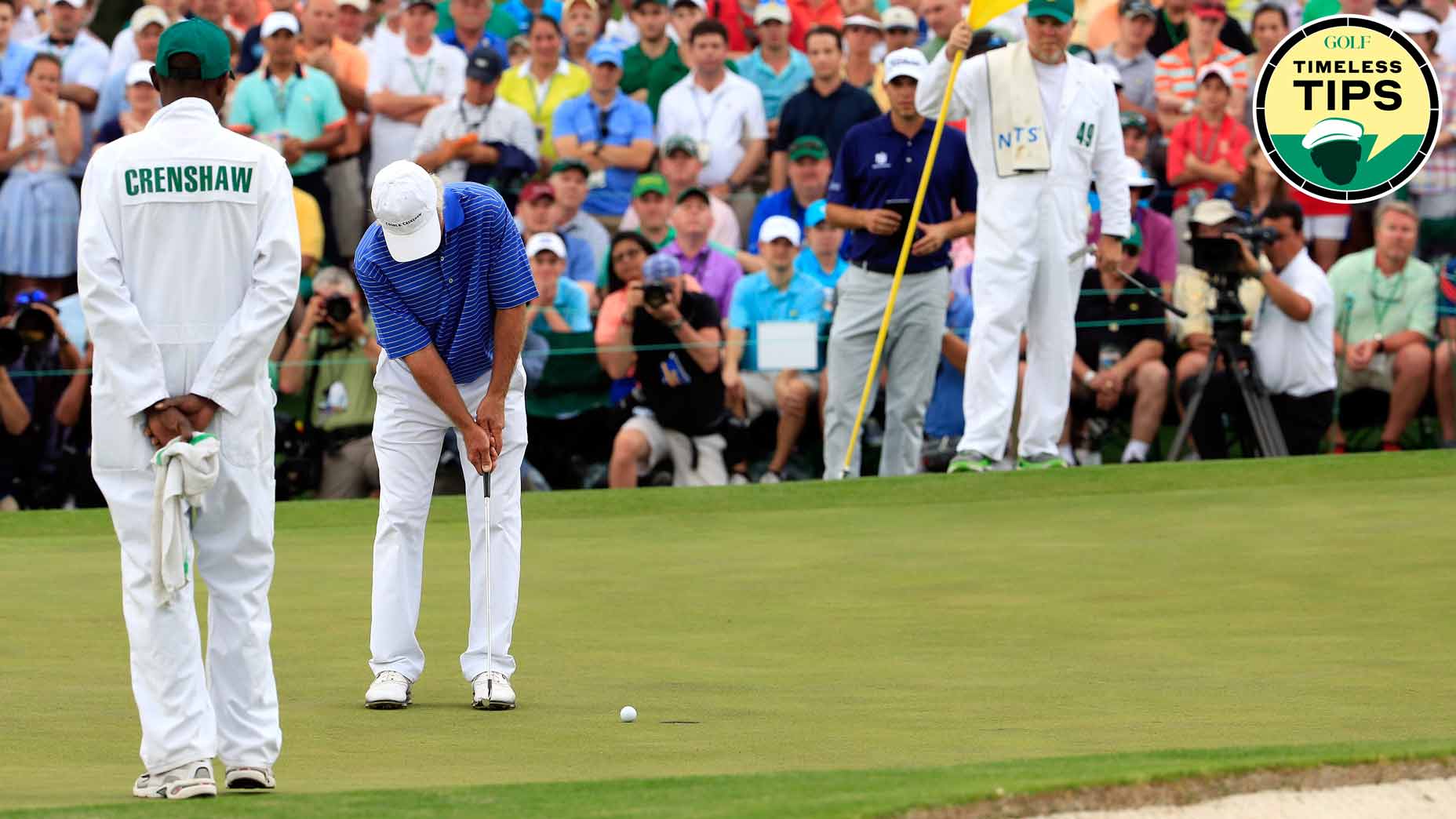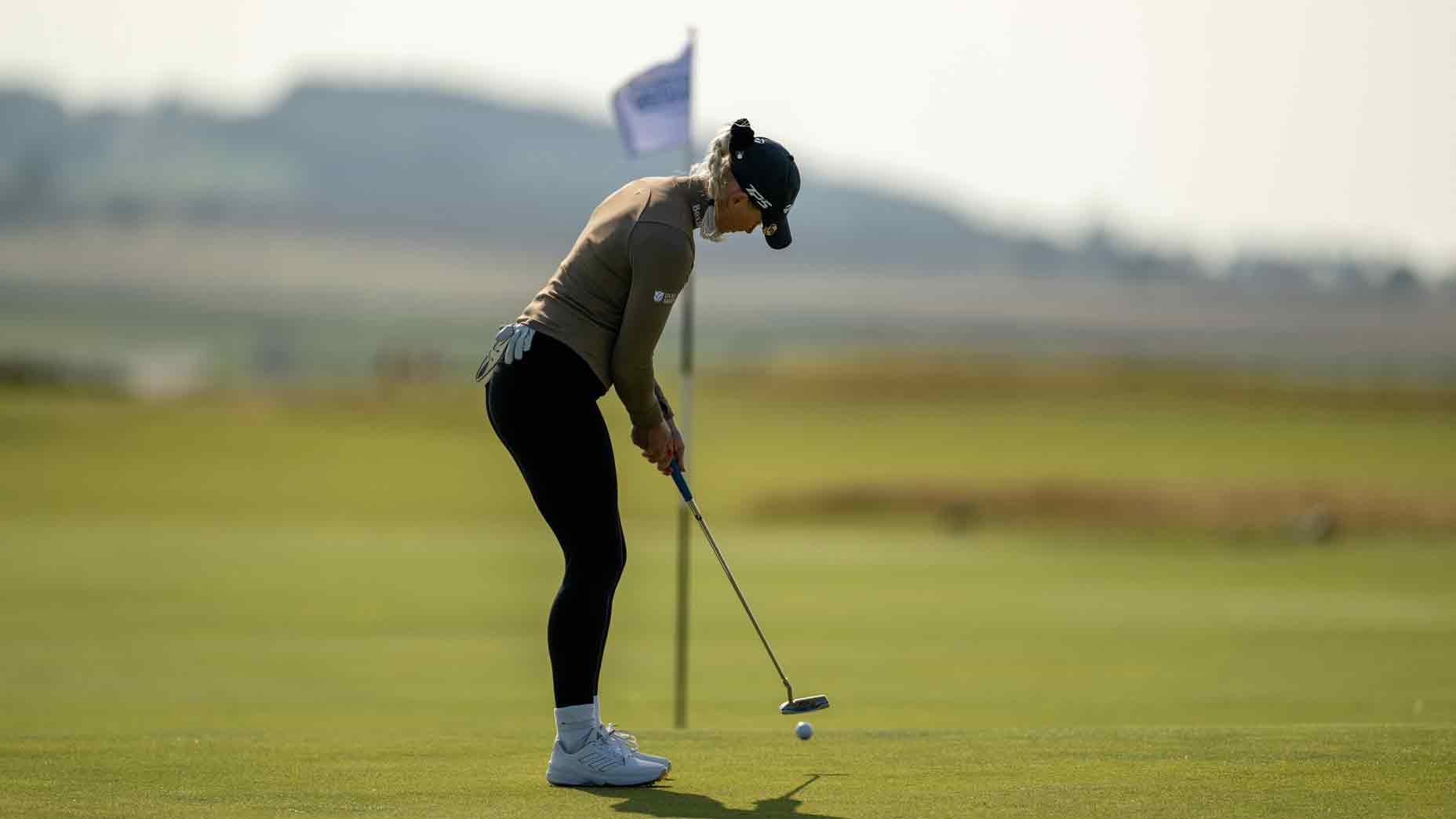You OWN a pre-putt routine. That’s good — it’s essential to long-term success on the greens. I bet, however, that your routine (what you do after you’ve marked, cleaned and replaced your ball), fails to include a preview stroke, which is a practice stroke made with a clear intention of matching the length of your stroke to the putt you’re about to attempt.
I’ve worked with a lot of Tour professionals over the years, and they all use preview strokes. When dollars and self-esteem are on the line on every putt, you go with any performance edge you can find. Believe me, a preview stroke is a big one.
Here’s how it works: If you’re facing a short putt, I want you to preview the short stroke you think will get the ball in the hole by physically replicating it from start to finish. When you’re about to face a little longer putt, say 12 to 15 feet, I want you to preview the medium-length stroke you think will be perfect for the amount of break you’re playing. When you have a 35-foot or longer lag putt, I advise you to take a long preview practice stroke that you “feel” will roll the ball stone-cold dead to the hole. In all cases, if you don’t like the look or feel of your previews, keep making them until your mind’s-eye tells you they’re perfect.
At my schools, we preach the importance of the 20-foot putting stroke, since 20 feet is the most common putt length in golf. So any student of mine facing a 15-foot putt on the course will preview some small adjustment to that 20-foot reference stroke during their pre-putt routine, factoring in the other conditions of the putt that are computed as you read the green, such as slope, break, grain, wind, etc.

Now I know that some golfers like to take practice strokes (which can become good preview strokes) behind the ball while others take them right next to the ball (while in their setup position). And other golfers don’t take practice strokes at all. I’m simply recommending that you try the preview strokes I’ve described here, and putt with your last thought being “That’s perfect!” rather than “I hope what I’ve been thinking, feeling and doing are right.”
My final plea in defense of the preview stroke is that you’re already tapping its power every time you play — you just don’t realize it. Picture this: You miss the green. When you consider the myriad conditions surrounding your lie, you realize that the chip or pitch you now face is unlike any other you’ve ever attempted. So what do you do? You pick the shot type you want to hit and choose your wedge. Then you take preview swings near the ball to test the lie conditions and gauge the length of swing needed to knock the ball close. I’m simply saying that the same look and feel “previews” are as beneficial to your putting as they are to your short game, especially when you consider the contours and speeds of today’s greens.
If you currently don’t use a preview stroke, try it — and give it a least a month. Always make your preview strokes while focusing on your aim line and visualizing the putt’s roll from start to finish. Once set, step in and repeat the preview in every detail. More importantly, feel good about it. A preview should fill you with confidence. I have no doubt that if you give your putting previews your best effort, everything about your putting will improve, from your sense of feel and touch to your ability to roll it in from anywhere on the green.






